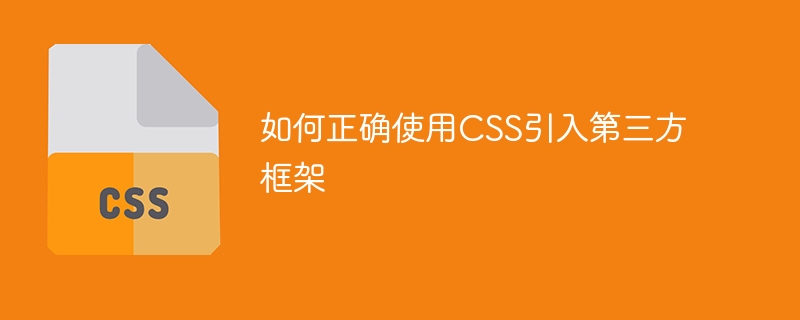

How to use CSS correctly to introduce third-party frameworks
In modern web development, the use of third-party frameworks is very common. Third-party frameworks provide many powerful and easy-to-use CSS styles and components that can save development time and improve website performance. This article will introduce how to correctly use CSS to introduce third-party frameworks and provide specific code examples.
Before using a third-party framework, you first need to understand its file structure. Usually, the third-party framework will provide a compressed CSS file, as well as some dependent JavaScript files and font files. Before introducing the framework, these files need to be organized correctly in the project's folders for future maintenance and upgrades.
The first step is to download the CSS file of the third-party framework. Typically, this file will be named something like "framework.css" or "framework.min.css". This file is the core of the framework and contains all style rules.
Next, introduce this CSS file at the head of the HTML file. You can use the tag, specify the rel attribute as "stylesheet", and the href attribute as the location of the third-party framework CSS file. For example:
<link rel="stylesheet" href="path/to/framework.css">
Make sure you specify the path correctly to ensure the browser can find the file.
Some frameworks may also depend on some JavaScript files. These files are typically used to provide interactive functionality and dynamic effects of the framework. These files need to be downloaded and properly included in the HTML file before use.
Take the Bootstrap framework as an example. If you want to use the interactive components it provides, you need to download and introduce the Bootstrap JavaScript file. At the bottom of the HTML file, use the




